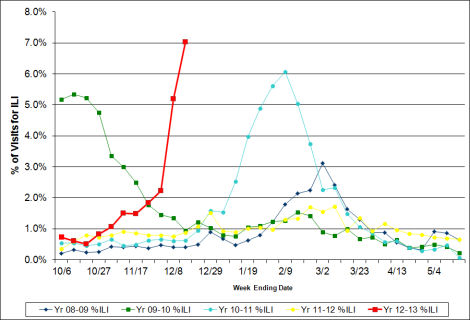

Paradigm Shift Intervention Monitoring
 twitter
twitter

Commentary
North Carolina
Swine H3N2v Sequences Match 2012 Cases
Recombinomics
Commentary 01:45
December 21, 2012

Prior to the summer cases, swine H3N2v sequences which matched the human sequences from late 2011 and early 2012 were rare. Only two swine examples were noted, a February 13 isolate from North Carolina, A/swine/North Carolina/A01203272/2012, and a May 9 isolate from Indiana, A/swine/Indiana/A01203509/2012. Both of these isolates had an N2 from a swine H3N2 lineage, in contrast to the vast majority of matching swine isolates, which had an N2 from a swine H1N2 lineage, which was present in the first 10 human cases in 2011.
The recent USDA sequences included a third swine match with the human 2012 cases, which was also from North Carolina, A/swine/North Carolina/A01300820/2012, which was not linked to agricultural fairs or human cases. Moreover, it was closely related to the February isolate from North Carolina, indicating this sub-clade was common in North Carolina. Similarly, a September isolate from North Carolina, A/swine/North Carolina/A01203801/2012, was also reported in November and also matched the human cases from 2012.
However, although three examples were reported in 2012 swine isolates from North Carolina, no human cases from North Carolina have been reported. The absence of human cases from North Carolina may indicate that jumps from swine to human are rare of surveillance is lacking. Most human cases of H3N2v are identified in the off season, due in part to the decline in seasonal H3N2 and an increase in surveillance for cases linked to swine exposure.
As seen in the above graph of ILI in North Carolina, the flu season of 2012/2013 has started early, and reports from the North Carolina website indicate the vast majority of flu isolates at this time are H3N2. These high levels will decrease the likelihood of detection of H3N2v cases in the near term.
Recombinomics
Presentations
Recombinomics
Publications
Recombinomics
Paper
at Nature Precedings